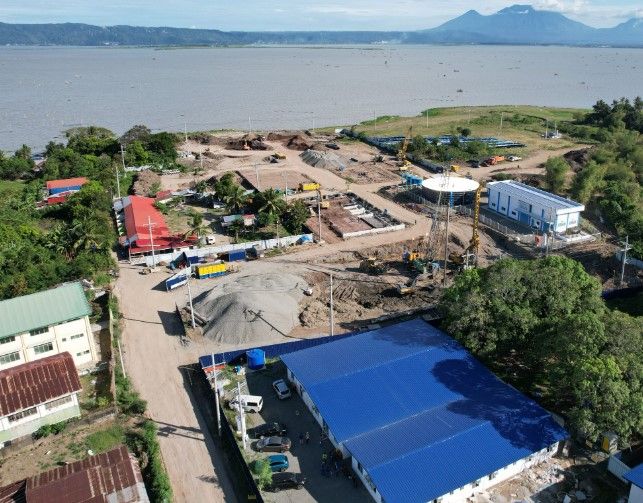WITH the National Capital Region (NCR) and adjoining provinces starting to feel the crunch of the El Niño phenomenon, the Manila Water Company, Inc. (MWCI) is just about to start siphoning the country’s largest freshwater basin of its water.
In a statement, the MWCI said that they are all set to launch Phase 1 operations of its East Bay Water Treatment Plant (WTP) this month.
Kim Monis, in her capacity as MWCI corporate communications manager, said that if all goes according to schedule, the P7.8-billion plant located in Pakil, Laguna is likely to start supplying running water under its Phase 1 Program.
Initially For Rizal
When asked as to where MWCI intends to get its supply, Monis said that the new water treatment plant will tap the Laguna de Bay.
“Yes, the East Bay WTP will treat water from the Laguna Lake using reverse osmosis process, making it suitable for public consumption,” she replied.
Pressed for more details, the MWCI mouthpiece said that aside from the locality which hosted the facility, Manila Water would be servicing some 390,000 individuals from at least six lakeshore municipalities of Rizal, which include the towns of Jalajala, Pililla, Baras, Cardona, Morong, and Binangonan.
Next: Eastern Metro
“Right now, there is no reason to think that we won’t be able to make the December deadline for Phase 1 of the East Bay project,” Monis said.
She further explained that when Phase 2 of the project becomes operational sometime in 2025, they would also be supplying running water to Metro Manila’s East Zone, including parts of Pasig, Pateros and Taguig.
Phase 2 of the East Bay project also includes the construction of a reservoir, pumping station, and pipe-laying of 60 kilometers of 1200- and 1400-millimeter diameter pipes.
MWCI In Full Swing
Meanwhile, MWCI reported that as of the second quarter of 2023, it has laid and maintained 5,418.90 kilometers of water pipelines all over the East Zone, within its service areas in Metro Manila and in the Rizal.
From 5,362.73 kilometers in September last year, the water firm has laid an additional 55.17 kilometers of pipes, particularly in several municipalities in Rizal to reach unserved consumers, MWCI said in a statement.
Affected by Climate Change
Due to increasing temperature, typhoons were seen more often wreaking havoc in the Laguna de Bay region encompassing Metro Manila and its adjoining provinces.
Interestingly, the effects of climate change go beyond heavy rainfall as it also has the potential to alter the ecosystems of the freshwater basin from where people in the localities surrounding the lake depend for their livelihood.
Another issue hounding the lake is the water pollution, as manifested in several studies which had synonymous findings – the lake is dying, hence the call for government action.
Laguna Lake Up Close
With a surface area of 91,170 hectares, an average depth of about 2.8 meters and an elevation of just about a meter above sea level, Laguna de Bay has become one of the primary freshwater sources in the Philippines.
It has 21 tributaries including Pagsanjan River which contributes 35% of the Laguna de Bay water buffer; and Santa Cruz River which contributes 15% of the volume of water stored in the country’s largest freshwater basin.
Other tributaries include the rivers of Balanak, Marikina, Mangangate, Tunasan and San Pedro.
Predominantly For Fishing
With its water categorized as Class C (ideal for fishing), the lake accounts for 17% of the national fisheries production, 10% of the national production for aquaculture and 44% of the national production for municipal fisheries.
However, large-scale fishpens have threatened the economic conditions of fishermen dependent upon open water fishery. Illegal fishing activities and increased aquaculture operations also led to declining harvest due to depletion of natural resources.
Increases of invasive fish species are also observed.
State of Laguna Lake
The lake has scored a low C- in water quality, with heavy phosphate and coliform loading, and a failing F for the state of its fisheries, with major problems in terms of invasive species, overfishing and declining natural food sources.
Scientific studies also found heavy metals, toxic chemicals, coliform and microplastics significantly contributing to the rapid deterioration of the lake from where two giant companies – the MWCI and the Maynilad are sourcing their ‘commercial merchandise.’
#OpinYonRizal #MWCI #LagunaDeBay #ManilaWater #Pakil #WaterSource #LagunaLake #Environment #OpinYon #WeTakeAStand
